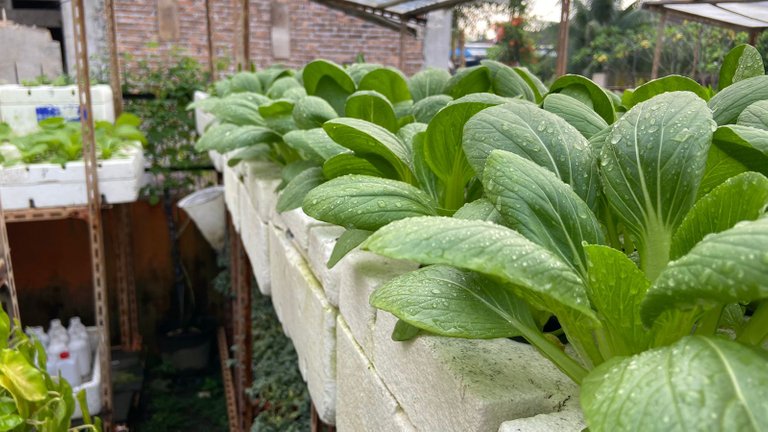
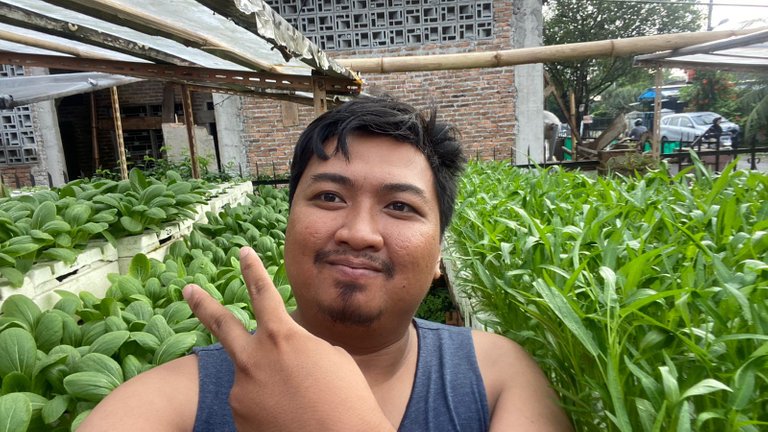
Hello Gardeners
How are you all doing today? I hope and pray that we are all always given good health and also ease in facing the various problems and crises that we will face. I feel, time flies and ends very quickly. It's already December and we are about to enter the end of 2022. Hive Garden Community, is organizing The Last Garden Challenge of The Year and everyone is invited to participate here.
One thing that I am grateful for in 2022, I am more consistent in taking care and planting vegetables in my hydroponic garden. Almost every month, there is never a time when my garden is empty without vegetables. I pray and try to be consistent in the future. As usual, every Monday I always try to contribute to this community by sharing stories about the development of vegetables in the hydroponic system and also my routine work in the hydroponic garden.
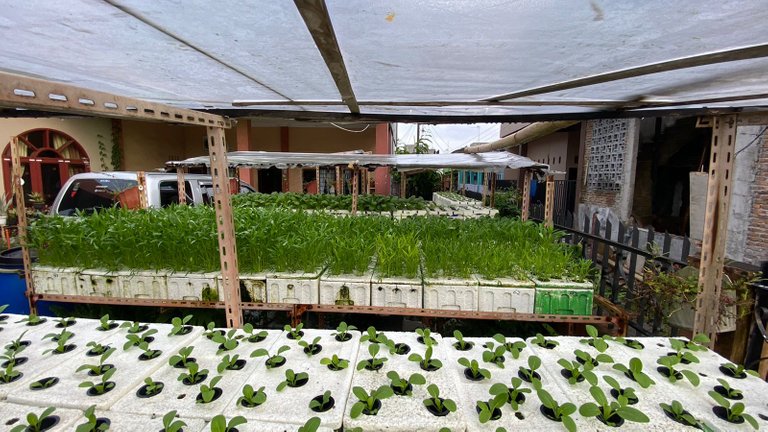
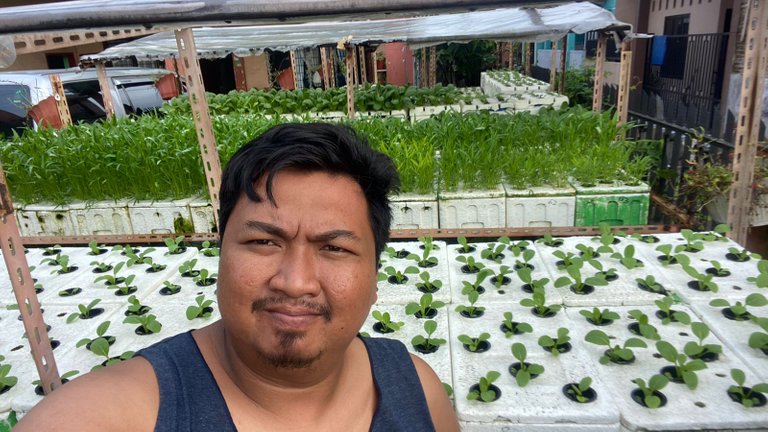
At the beginning of this week, the weather anomaly is still happening where I live. Morning to noon, the weather will be very hot and scorching, making all the vegetables wilt. However, in the afternoon and evening it would rain with very strong winds. For normal humans, this kind of weather can make us sick easily. I've coughed a few times and experienced the flu because of the temperature difference and this transitional season.
What is the impact of the transitional season on vegetables in our garden? According to some agricultural literature, the transitional season often damages some vegetables, especially in the early weeks of their growth. However, if you grow vegetables using a hydroponic system, there is almost no problem with climate change like this. Hydroponic systems utilize water as a growing medium and optimize the nutrient content given to the plants.
Even if it doesn't have any adverse effects, the transitional season is usually the season for insect attacks on our plants. Therefore, one of the routine preventive measures that I can take is to spray a plant-based pesticide that I make with water and garlic. I spray it every two days and we can see the results now. So, let's check the condition and development of some vegetables in my hydroponic garden.
Condition and Development of Pakchoy
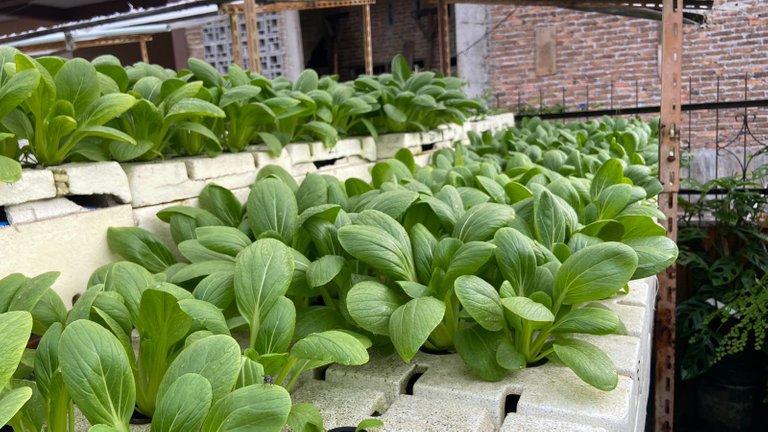
Let's start this discussion by looking at the pakchoys that I grow in my hydroponic garden. I have over 600 pots of pakchoy with two different ages of plants. Let's start with these bigger pakchoys. The pakhcoy you see here is about 28 days old after seeding. These vegetables are growing very lushly and optimally, the leaves are green and the stems are large and strong.
I was quite surprised by the development of this pakcoy. In the early weeks, the condition of this pakcoy looked very concerned, some leaves looked yellow and very sad. The situation began to change, since the last two weeks I did treatment and added hydroponic liquid fertilizer to increase the ppm concentration in the solution. As a result, you can see that the pakcoys are growing very well until now. I plan to harvest these vegetables in two or three days.
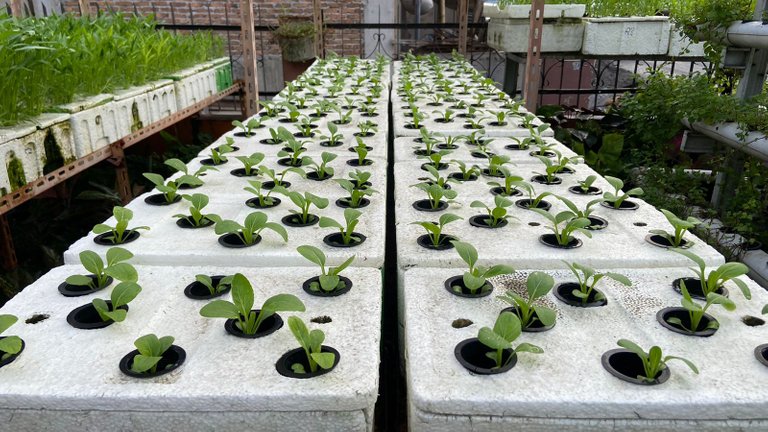
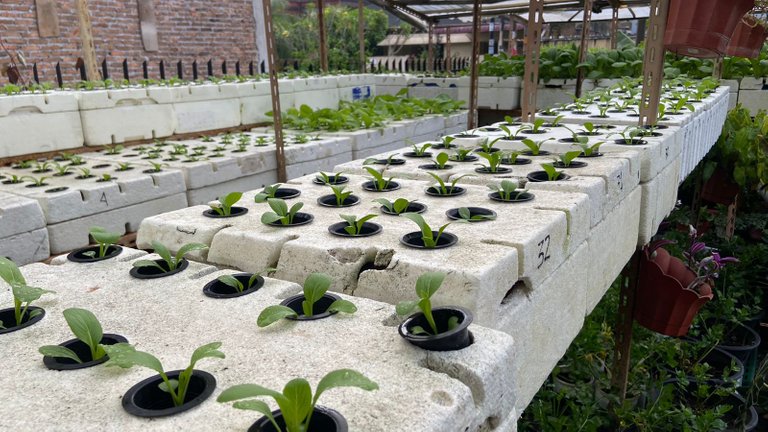
In addition, I also have about 400 pots of pakcoy that are currently about 15 days old after seeding. These pakcoys are also growing very vigorously and optimally. I regulate the water in the hydroponic media with a concentration of around 1300-1400 ppm, and until now, the results are still good and optimal. All the pakcoys grew uniformly and there was no sign of pest infestation.
Condition and Development of Kangkong
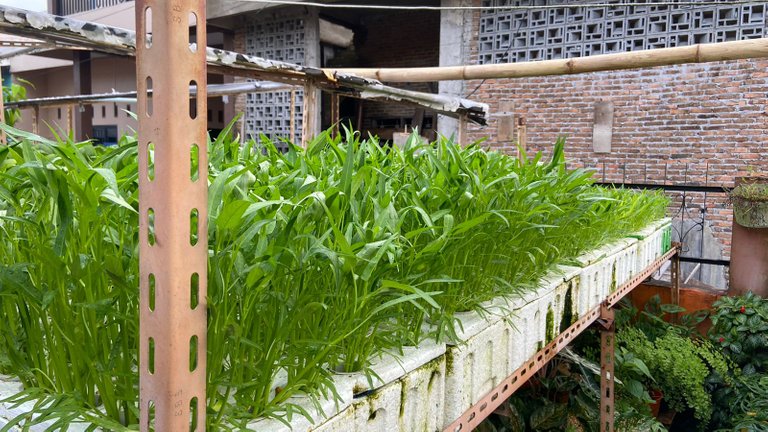
Kangkong is one of the vegetables that I consistently grow in my hydroponic garden. Kangkong was also my first vegetable that I used to learn about hydroponic vegetables. Kangkong is perfect for those of you who want to try growing vegetables. It is easy to care for, grows very fast and tastes very good.
In my hydroponic garden, I have kangkong with two different planting ages. The first one is 17 days after sowing. This kangkong grows very well and also grows uniformly. For the concentration of ppm solution in the water medium, I used liquid hydroponic fertilizer so that the water concentration in the hydroponic medium was around 800-1000 ppm. I think I will harvest this vegetable in four days.
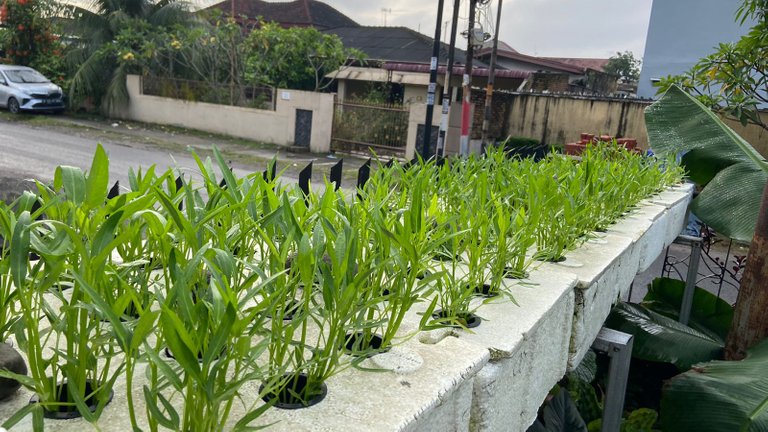
In addition, I also have kangkong that I moved into the growing medium at the beginning of last week. This kangkong is about 10 days old. It is also growing very well and optimally. I think this growth is also because I used the right concentration of liquid fertilizer.
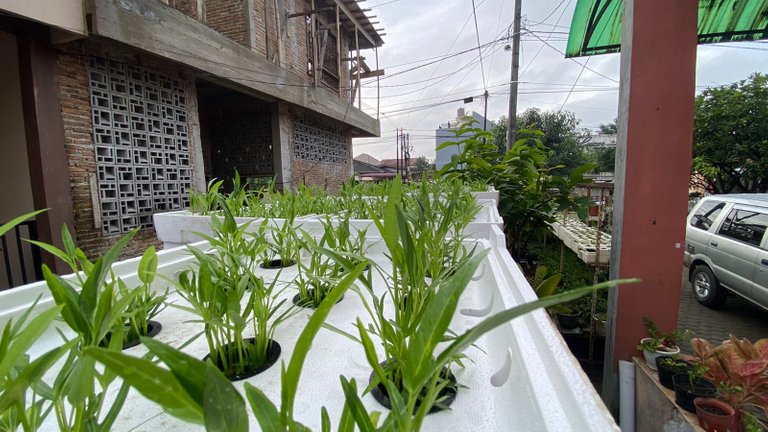
This week, I also added five more boxes of hydroponic media to my hydroponic garden, five Styrofoam boxes that I made for planting the kangkong or as an addition.
Condition and Development of Lettuce
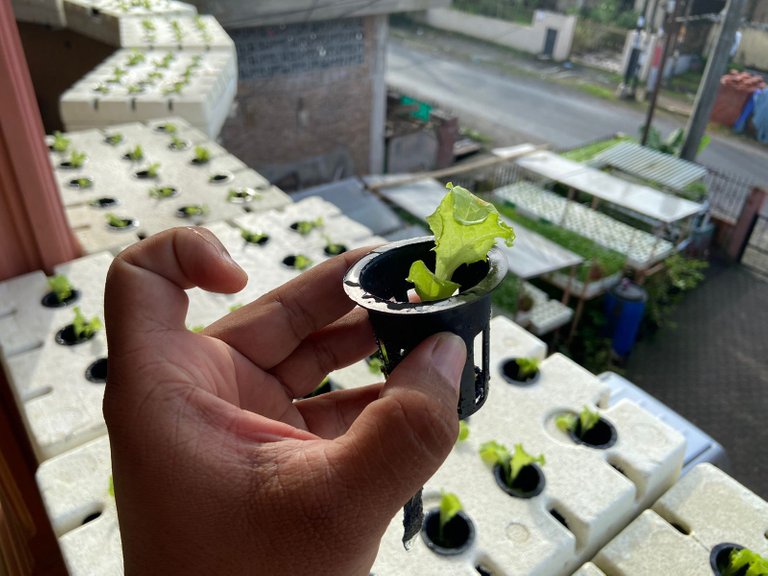
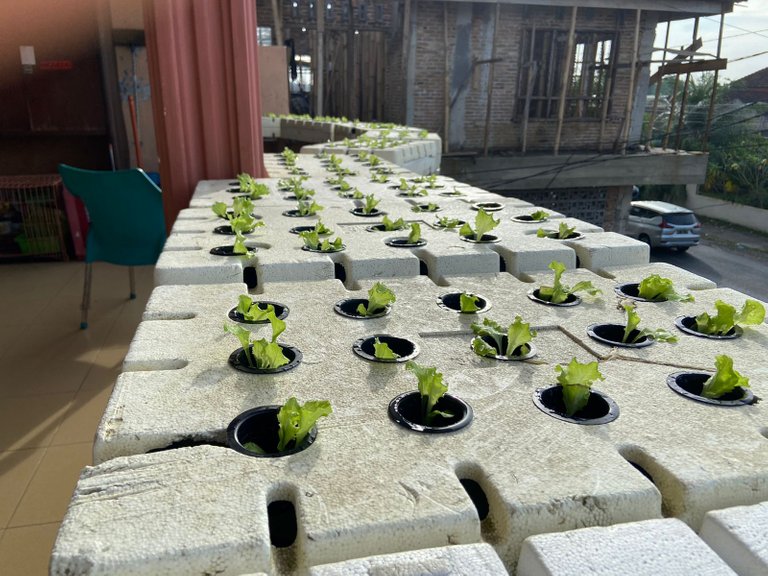
Next, I invite you to see the condition of the lettuce that I planted in my hydroponic garden. I planted about 200 pots of lettuce and all grew uniformly and optimally. From my observations, I found no damage to the lettuce that I planted. I planted the lettuce on the second floor of my house. I utilized a little wall of my second floor balcony and modified it to put the hydroponic media there. Actually, lettuce is a vegetable that should be grown at high altitudes and this vegetable is not resistant to hot weather.
The hydroponic system can allow us to grow lettuce in lowlands or hot weather. We just need to find a location that doesn't get too much sun. Therefore, my balcony is ideal for growing lettuce. On my balcony, direct sunlight is only about 4-5 hours so it is ideal for lettuce development.
Condition of Mint Leaves in PVC Pipe Hydroponic Installation

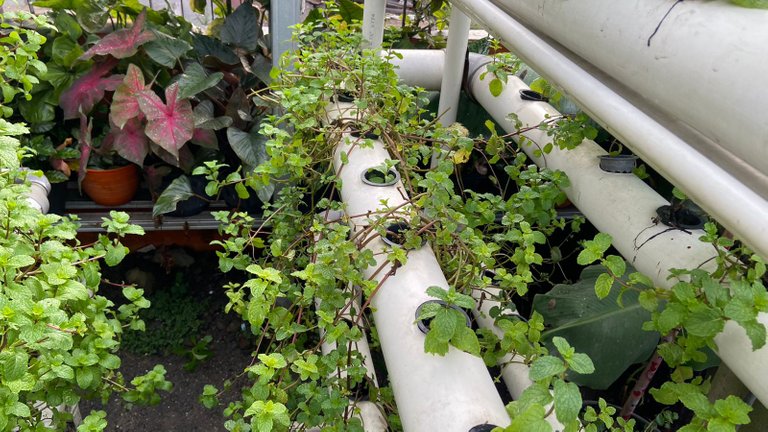
This week, I did a lot of harvesting of mint leaves that I grew in my hydroponic garden. I have about 130 pots of mint that are growing very well. You can see from the photos I uploaded in this content. When mint leaves grow too lush, they give off a fragrant aroma and sometimes attract caterpillars that will eat the leaves. One way to reduce caterpillar attacks on mint leaves. We can do regular harvesting and should not give the mint leaves too lush.
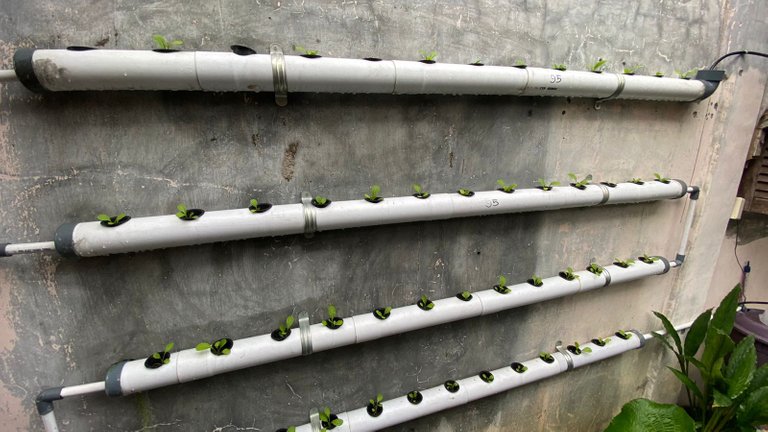
This week, I also transplanted the seedlings to my growing medium. I have one wall hydroponic installation unit that I installed on the side wall of my house. I planted about 60 pots of bitter mustard in this hydroponic installation. Bitter mustard is a favorite vegetable in my family and one of the vegetables that I consistently grow in my hydroponic garden. I grow this vegetable only for personal use and not for sale to consumers.
Okay, that's all my story this time. I hope you get information and inspiration from this post. See you next week.

Call me Isdarmady, because I have a full name that is very long, namely Isdarmady Syahputra Ritonga. I am a head of the family who work as Farmers Vegetables Hydroponic and Consultant Hydroponics, sometimes I also sell coffee from various regions in Indonesia.
I have expertise dispensing coffee with a variety of techniques and tools brewing, because I have the desire to make a coffee shop with hydroponics as centerpieces. Help me realize that dream.
Thanks for read, vote, re-blog and support me in Hive. Maybe god will reward the kindness, let’s success together.




